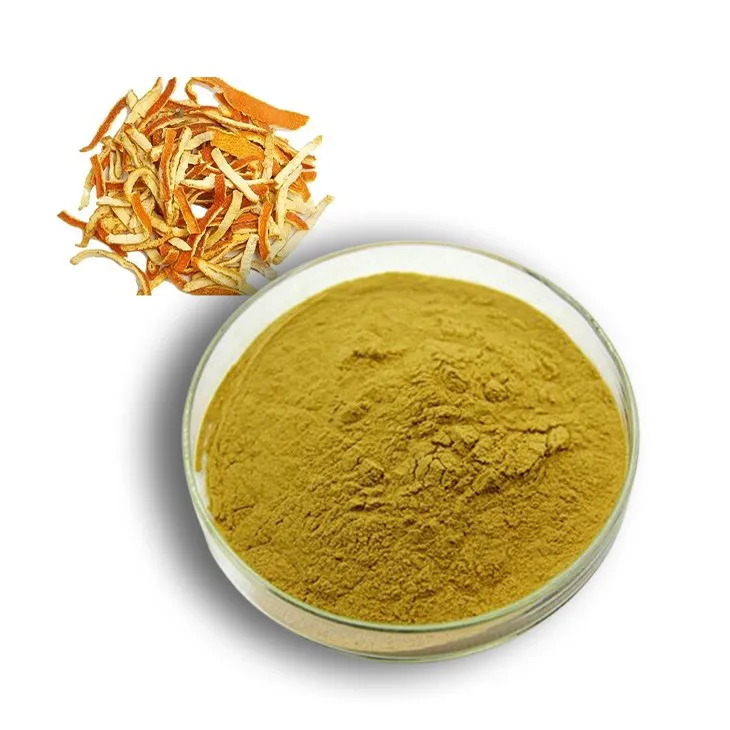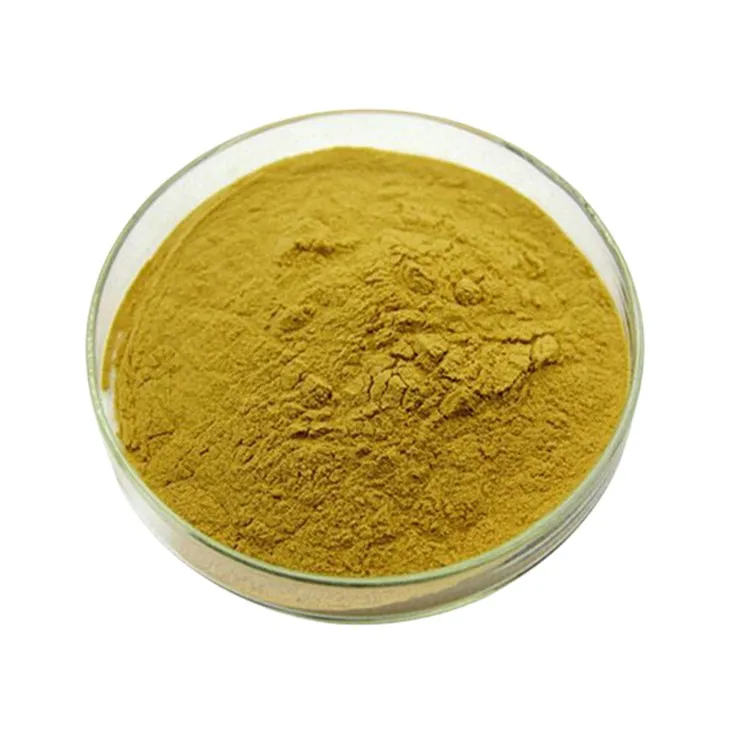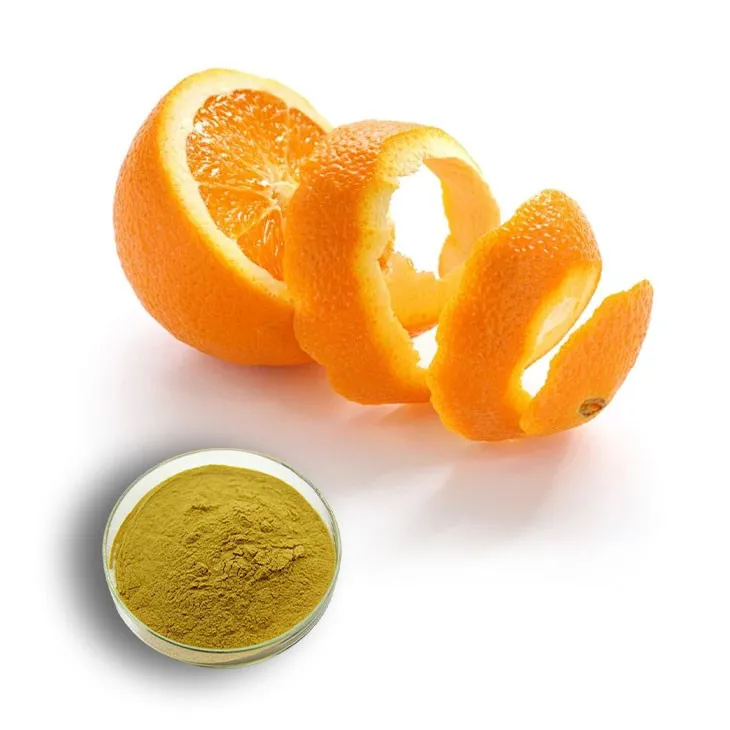- 0086-571-85302990
- sales@greenskybio.com
The taste of mature hesperidin and natural hesperidin.
2024-11-11

1. Introduction
Hesperidin is a flavanone glycoside that has gained significant attention in recent years due to its various potential health benefits. It is commonly found in citrus fruits, especially in the peels. Mature Hesperidin and natural Hesperidin are two forms that are often studied, and understanding their taste characteristics is crucial for a variety of applications, from the food and beverage industry to the pharmaceutical sector.

2. Chemical Properties
2.1 Natural Hesperidin
Natural hesperidin has a specific chemical structure. It is composed of hesperetin, a flavanone, and a disaccharide, rutinose. The molecular formula is C₂₈H₃₄O₁₅. This chemical structure gives it certain physical and chemical properties. For example, it is a white to off - white powder, which is sparingly soluble in water but more soluble in some organic solvents such as methanol and ethanol. Its chemical stability under different conditions also affects its taste and potential applications.
2.2 Mature Hesperidin
Mature hesperidin may have some differences in its chemical structure compared to natural hesperidin. During the maturation process, there may be changes in the glycosidic linkages or minor modifications in the hesperetin moiety. These changes can potentially influence its taste. For instance, the degree of polymerization or the presence of additional functional groups may alter the way it interacts with taste receptors on the tongue.

3. Sources
3.1 Natural Hesperidin Sources
As mentioned earlier, natural hesperidin is predominantly found in citrus fruits. Oranges, lemons, and grapefruits are excellent sources. The peels of these fruits contain a relatively high concentration of hesperidin. In fact, the peel is often considered a by - product in the citrus processing industry, but it has become a valuable source for the extraction of hesperidin. Additionally, some traditional medicinal plants may also contain small amounts of natural hesperidin.
3.2 Mature Hesperidin Sources
Mature hesperidin is also sourced from citrus fruits, but it is more specifically related to the hesperidin present in fully ripened fruits. The maturation process of the fruit can lead to changes in the hesperidin content and its properties. For example, as a fruit ripens, the concentration of hesperidin may increase or decrease, and its chemical form may be modified. These changes are important to consider when studying the taste of mature hesperidin.

4. Taste Characteristics
4.1 Taste of Natural Hesperidin
Natural hesperidin has a somewhat bitter taste. This bitterness is related to its chemical structure and the way it interacts with the taste buds on the tongue. The flavanone moiety in hesperidin is likely to contribute to this bitter taste. However, the degree of bitterness can vary depending on factors such as the source of the hesperidin (i.e., different citrus varieties may have slightly different tasting hesperidin) and the extraction method used. For example, if the extraction process involves harsh chemicals or high temperatures, it may affect the taste of the resulting hesperidin.
4.2 Taste of Mature Hesperidin
Mature hesperidin may have a more complex taste compared to natural hesperidin. In addition to the underlying bitterness, it may have some fruity or floral notes. This could be due to the changes that occur during the maturation process of the fruit. As the fruit ripens, other compounds may be formed or modified, which can interact with hesperidin and influence its taste. For example, the formation of esters or terpenes during fruit ripening may contribute to a more pleasant or nuanced taste in mature hesperidin.

5. Factors Influencing the Taste
5.1 Extraction Methods
- Solvent Extraction: When using solvents like ethanol or methanol for extraction, the choice of solvent can impact the taste. If the solvent is not completely removed during the purification process, it can leave behind a residual flavor that affects the taste of hesperidin. For example, ethanol may impart a slight alcoholic note if not fully evaporated.
- Supercritical Fluid Extraction: This method uses supercritical fluids, such as carbon dioxide. It is considered a more "clean" extraction method as it can leave fewer residues. However, the pressure and temperature conditions during extraction can still influence the chemical structure of hesperidin to some extent, thereby affecting its taste.
5.2 Purification Processes
- Filtration: Filtration is often used to remove impurities during the purification of hesperidin. If the filtration is not efficient enough, it may leave behind some unwanted substances that can affect the taste. For example, if there are residual proteins or polysaccharides, they may contribute to an off - taste.
- Chromatography: Chromatographic techniques like high - performance liquid chromatography (HPLC) are used for purifying hesperidin. However, the mobile phase and stationary phase used in chromatography can potentially interact with hesperidin and cause changes in its taste. For example, if the mobile phase contains certain additives, they may be adsorbed onto the hesperidin and change its flavor profile.
6. Potential Applications in Various Industries
6.1 Food and Beverage Industry
- In the food and beverage industry, both natural and mature hesperidin can be used as flavor modifiers. Due to their bitter taste (especially natural hesperidin), they can be used in small amounts to balance the sweetness in products like juices or candies. For example, in some citrus - flavored beverages, a small amount of hesperidin can enhance the overall flavor profile by adding a touch of bitterness.
- Mature hesperidin, with its more complex taste, may also be used in the development of new and unique flavor combinations. For instance, it could be used in the creation of high - end or specialty food products where a more nuanced flavor is desired.
6.2 Pharmaceutical Industry
- In the pharmaceutical industry, hesperidin is known for its potential health benefits, such as antioxidant and anti - inflammatory properties. While taste may not be the primary consideration in drug formulation, it can still play a role. For example, if hesperidin is used in a chewable tablet or a liquid formulation, its taste needs to be acceptable to patients. Therefore, understanding the taste differences between natural and mature hesperidin can help in formulating more palatable pharmaceutical products.
- Moreover, the potential differences in bioavailability between natural and mature hesperidin, which may be related to their taste and chemical properties, can also impact their effectiveness as pharmaceutical ingredients.
6.3 Cosmetic Industry
- In the cosmetic industry, hesperidin can be used for its antioxidant properties. The taste of hesperidin may not be directly relevant in most cosmetic products, but it can be an indirect factor. For example, if hesperidin is used in a lip balm or an oral care product, its taste needs to be acceptable. Additionally, the extraction and purification processes that affect the taste may also influence the quality and performance of hesperidin in cosmetic applications.
7. Conclusion
In conclusion, the taste of mature hesperidin and natural hesperidin is an important aspect to consider for their various applications. While natural hesperidin has a characteristic bitter taste, mature hesperidin offers a more complex flavor profile. The chemical properties, sources, and factors such as extraction methods and purification processes all play a role in determining their taste. Understanding these differences can provide valuable insights for industries such as food and beverage, pharmaceutical, and cosmetic, enabling them to make more informed decisions regarding the use of hesperidin in their products.
FAQ:
What are the main chemical properties of mature hesperidin?
Mature hesperidin is a flavanone glycoside. It has a complex chemical structure which includes a flavanone backbone with a sugar moiety attached. It is relatively stable under normal conditions but can be affected by factors like pH and temperature. It has certain solubility characteristics, being more soluble in some organic solvents compared to water, which can influence its extraction and purification processes.
How does the taste of natural hesperidin differ from that of mature hesperidin?
The taste of natural hesperidin is often described as slightly bitter. Mature hesperidin, on the other hand, may have a more complex taste profile. It can have a reduced bitterness compared to natural hesperidin due to possible changes during the maturation process. These changes can be related to alterations in its chemical composition, such as the modification of functional groups or the formation of different derivatives. However, the exact taste difference can also be influenced by the presence of other compounds in the source material.
What are the common sources of natural hesperidin?
Natural hesperidin is commonly found in citrus fruits, such as oranges, lemons, and grapefruits. It is present in the peel, pulp, and membranes of these fruits. Citrus fruits are rich sources as they produce hesperidin as part of their natural defense mechanisms and metabolic processes. Some other plants may also contain hesperidin, but citrus fruits are the most well - known and widely studied sources.
How do extraction methods affect the taste of mature hesperidin?
Different extraction methods can have a significant impact on the taste of mature hesperidin. For example, solvent extraction using harsh solvents may introduce unwanted flavors or residues that can alter the taste. On the other hand, more gentle extraction methods like supercritical fluid extraction may preserve the natural taste better. Also, the efficiency of extraction can affect the concentration of impurities, which in turn can influence the taste. If impurities are not removed properly during extraction, they can contribute to off - flavors or modify the overall taste perception.
What are the potential applications of mature hesperidin in the food industry?
In the food industry, mature hesperidin can be used as a natural flavor enhancer or modifier. Due to its unique taste profile, it can add depth and complexity to food products. It can also be used in the development of functional foods, as hesperidin has potential health - promoting properties. For example, it may be added to citrus - flavored beverages to enhance the natural flavor and provide added nutritional value. Additionally, it can be used in confectionery products to balance the sweetness and add a characteristic flavor note.
Related literature
- Chemical and Sensory Properties of Hesperidin in Citrus Fruits"
- "Maturation - Induced Changes in Hesperidin: A Review of Chemical and Taste Aspects"
- "Extraction and Purification of Hesperidin: Effects on Taste and Quality"
- ▶ Hesperidin
- ▶ Citrus Bioflavonoids
- ▶ Plant Extract
- ▶ lycopene
- ▶ Diosmin
- ▶ Grape seed extract
- ▶ Sea buckthorn Juice Powder
- ▶ Fruit Juice Powder
- ▶ Hops Extract
- ▶ Artichoke Extract
- ▶ Mushroom extract
- ▶ Astaxanthin
- ▶ Green Tea Extract
- ▶ Curcumin
- ▶ Horse Chestnut Extract
- ▶ Other Product
- ▶ Boswellia Serrata Extract
- ▶ Resveratrol
- ▶ Marigold Extract
- ▶ Grape Leaf Extract
- ▶ New Product
- ▶ Aminolevulinic acid
- ▶ Cranberry Extract
- ▶ Red Yeast Rice
- ▶ Red Wine Extract
-
Avocado Extract Powder
2024-11-11
-
Saffron Extract Powder
2024-11-11
-
Bitter Melon Extract
2024-11-11
-
Giant Knotweed Extract
2024-11-11
-
Curcumin
2024-11-11
-
Ginger Extract
2024-11-11
-
Centella Asiatica Extract
2024-11-11
-
Cat Claw Extract
2024-11-11
-
Bilberry Extract
2024-11-11
-
Artichoke Leaf Extract
2024-11-11





















